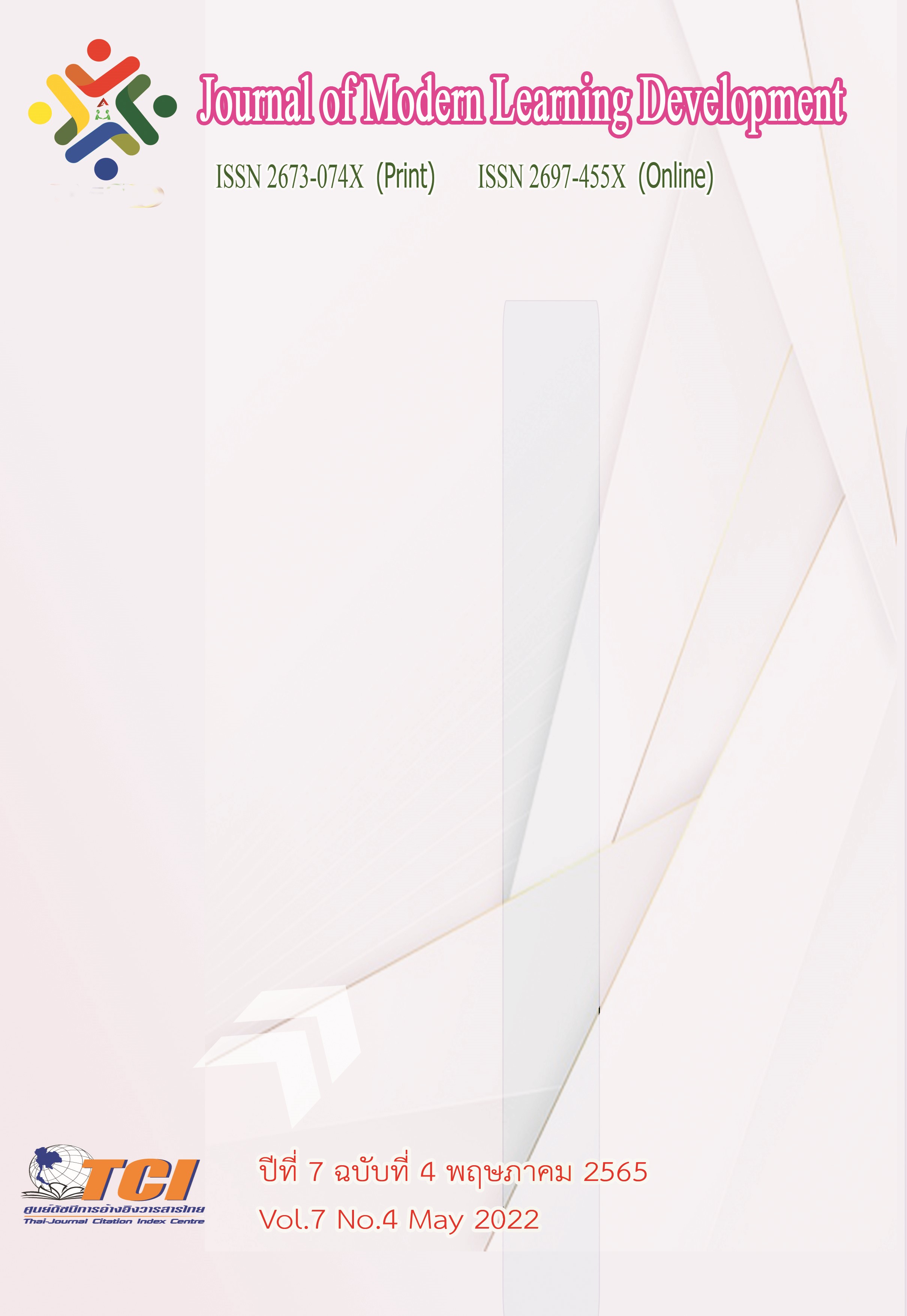The Active Learning Development for Speaking Skill of the Mathayomsuksa 3 Students
Main Article Content
Abstract
This research was created for the purpose of developing a teaching model(s) that using an active learning development for the speaking skills of the Grade 9 students. The sample of this study is group of 47 students of Mathayomsuksa 3 at Triamudomsuksanomklao Kabinburi School in the first semester of the 2019 academic year. The results revealed that the active learning model had four components: 1) principle(s), 2) objective(s), 3) teaching procedure(s) and 4) supporting system(s). The PEPCP teaching procedures of the researcher included preparing, educating, practicing, comprehending and presenting. The effectiveness of the active learning model was 83.23/83.03. It was higher than the criteria of 80/80. The English speaking proficiencies of the students after using the active learning model were significantly higher than that before using the active learning model at the significance level of .05, and the students' satisfactions towards active learning generally was at the high level.
Article Details
References
จินดารัตน์ โพธิ์นอก. (2560). การคิดเชิงวิพากษ์. กรุงเทพมหานคร: โรงพิมพ์แห่งจุฬาลงกรณ์มหาวิทยาลัย.
ดิเรก พรสีมา. (2559). ครูไทย 4.0. กระทรวงศึกษาธิการ. กรุงเทพมหาคร: สำนักปลัดกระทรวงกระทรวงศึกษาธิการ.
ทิศนา แขมมณี. (2557). 14 วิธีสอนสำหรับครูมืออาชีพ. กรุงเทพมหานคร: สำนักพิมพ์แห่งจุฬาลงกรณ์มหาวิทยาลัย.
ปรียานุช พรหมภาสิต. (2559). เอกสารคู่มือการจัดการเรียนรู้ “Active Learning (AL) for HuSo at KPRU. กำแพงเพชร : คณะมนุษยศาสตร์และสังคมศาสตร์ มหาวิทยาลัยราชภัฎกำแพงเพชร.
ไพฑูรย์ สินลารัตน์. (2562). ความเป็นไปได้ในการประยุกต์ใช้การสอนเชิงรุกอาคีตะโมเดลในประเทศไทย. วารสารบัณฑิตศึกษา มหาวิทยาลัยราชภัฏวไลยอลงกรณ์ ในพระบรมราชูปถัมภ์. 13 (1), 92-106.
ฟาฏินา วงศ์เลขา. (2557). พัฒนาภาษาอังกฤษ เตรียมเด็กไทยสู่อาเซียนและเวทีโลก. กรุงเทพมหานคร: พิมพ์ ลักษณ์.
เมษ ทรงอาจ. (2558). การพัฒนารูปแบบการเรียนการสอน รายวิชาจิตวิทยาสำหรับครู โดยใช้การสอนแบบ มีส่วนร่วมของนิสิตปริญญาตรี มหาวิทยาลัยมหาจุฬาลงกรณราชวิทยาลัย วิทยาเขตขอนแก่น. ขอนแก่น: มหาวิทยาลัยมหาจุฬาลงกรณราชวิทยาลัย วิทยาเขตขอนแก่น.
เยาวเรศ ภักดีจิตร. (2557). เอกสารประกอบการเสวนาทางวิชาการ เรื่อง Active learning กับการเรียนรู้ใน ศตวรรษที่ 21. วันที่ 30 กรกฎาคม 2557. นครสวรรค์: มหาวิทยาลัยราชภัฏนครสวรรค์.
วิจารณ์ พานิช. (2556). ครูเพื่อศิษย์สร้างห้องเรียนกลับทาง. (พิมพ์ครั้งที่ 2). กรุงเทพมหานคร: บริษัท เอส. อาร์. พริ้นติ้ง แมสโพรดักส์ จำกัด
สถาพร พฤฑฒิกุล. (2555). คุณภาพผู้เรียน.......เกิดจากกระบวนการเรียนรู้ QUALITY OF STUDENTS DERIVED FROM ACTIVE LEARNING PROCESS. วารสารการบริหารการศึกษา มหาวิทยาลัย บูรพา. 6 (2), 1-13.
สุมิตรา อังวัฒนกุล. (2555). วิธีสอนภาษาอังกฤษเป็นภาษาต่างประเทศ. กรุงเทพมหานคร: สำนักพิมพ์จุฬาลงกรณ์มหาวิทยาลัย.
Besler, F. and Kurt, O. (2016). Effectiveness of Video Modeling Provided by Mothers in Teaching Play Skill to Children whit Autism. Educational Sciences : Theory & Practice. 16 (2), 209-230.
Bonwell, C. C. (1991). Active Learning : Creating Excitement in the Classroom. Washington DC : School of Education and Human Development, George Washington University.
Daouk, Z. Bahous, R. and Bacha, N.N. (2016). Perceptions on the effectiveness of active learning strategirs. Journal of Applied Research in Higher Education. 8 (3), 360-375
Prince, M. (2014). Does Active Learning Work? A Review of the Research. Journal of Engineering Education. 93 (3), 223-231.


